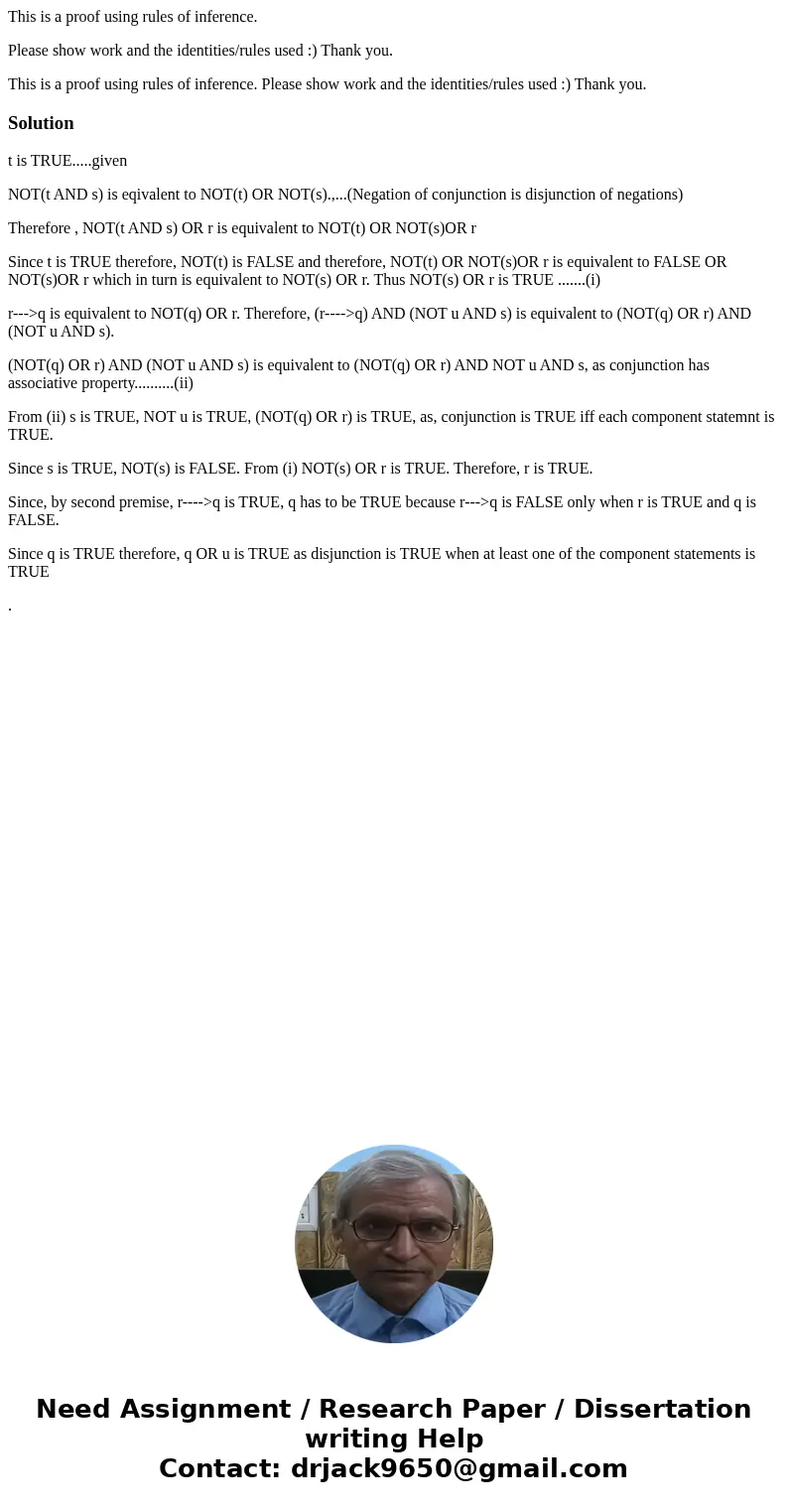This is a proof using rules of inference Please show work an
This is a proof using rules of inference.
Please show work and the identities/rules used :) Thank you.
This is a proof using rules of inference. Please show work and the identities/rules used :) Thank you.Solution
t is TRUE.....given
NOT(t AND s) is eqivalent to NOT(t) OR NOT(s).,...(Negation of conjunction is disjunction of negations)
Therefore , NOT(t AND s) OR r is equivalent to NOT(t) OR NOT(s)OR r
Since t is TRUE therefore, NOT(t) is FALSE and therefore, NOT(t) OR NOT(s)OR r is equivalent to FALSE OR NOT(s)OR r which in turn is equivalent to NOT(s) OR r. Thus NOT(s) OR r is TRUE .......(i)
r--->q is equivalent to NOT(q) OR r. Therefore, (r---->q) AND (NOT u AND s) is equivalent to (NOT(q) OR r) AND (NOT u AND s).
(NOT(q) OR r) AND (NOT u AND s) is equivalent to (NOT(q) OR r) AND NOT u AND s, as conjunction has associative property..........(ii)
From (ii) s is TRUE, NOT u is TRUE, (NOT(q) OR r) is TRUE, as, conjunction is TRUE iff each component statemnt is TRUE.
Since s is TRUE, NOT(s) is FALSE. From (i) NOT(s) OR r is TRUE. Therefore, r is TRUE.
Since, by second premise, r---->q is TRUE, q has to be TRUE because r--->q is FALSE only when r is TRUE and q is FALSE.
Since q is TRUE therefore, q OR u is TRUE as disjunction is TRUE when at least one of the component statements is TRUE
.

 Homework Sourse
Homework Sourse